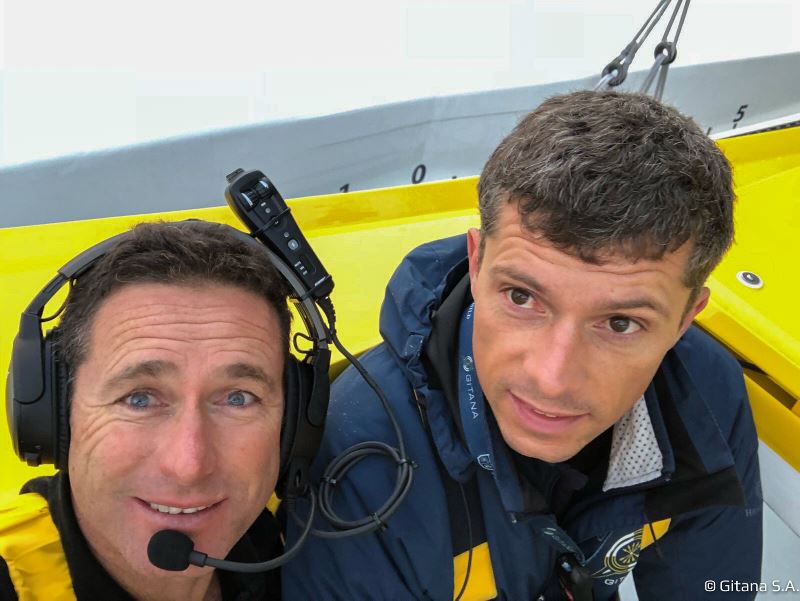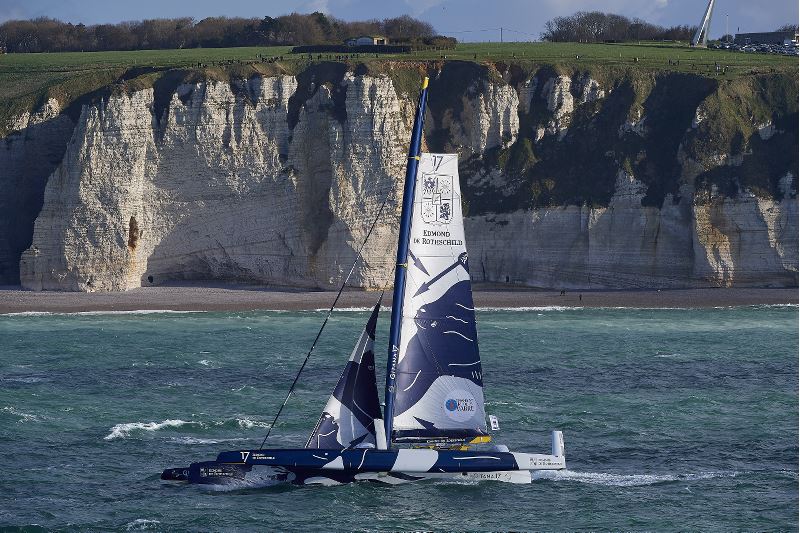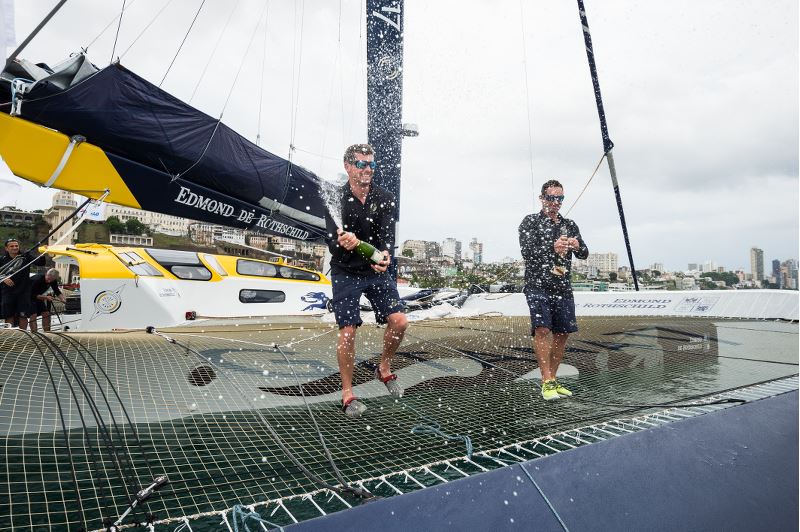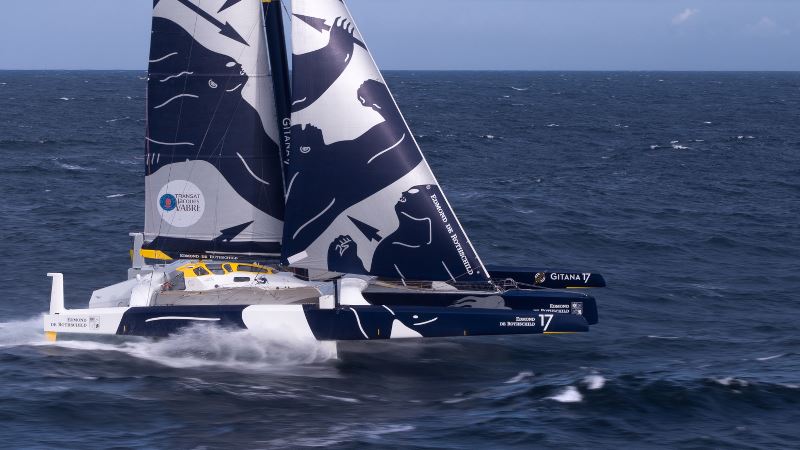Different perspectives in this Transat Jacques Vabre 2017
The duo
Sébastien Josse: “No complaints… it was perfect! From the great complicity between us, to the fluidity of the exchanges, the way we managed the boat and the good humour. I had no doubts about that and our pairing worked really well. I’m happy about my choice and the chance to have shared the boat’s first race with Thomas. Today, he boasts an excellent level of expertise aboard as any miles in race configuration, at this pace, are more than formative; in terms of apprenticeship this is the concentrated, fast track method. The idea is that he remains part of the project at Gitana. Even though the programme over the next major races is more focused on singlehanded configuration, these races are constructed as a team!”
Thomas Rouxel: “It’s in my nature. I couldn’t enjoy sailing double-handed with a sailor who I didn’t hit it off with. Sébastien is a friend, which inevitably made this race all the finer. I trust him and I know I can freely express myself as he listens and takes my opinion into consideration. During the first night at sea in the English Channel, with no AIS, with the torrents of water streaming over the cuddy on deck and the boat bombing along at 30 to 40 knots, I relied on his experience. We complement each other fairly well, which helped us. One of us always has a positive attitude if the other one is a bit sluggish… It’s often like that with couples isn’t it? (laughs) We’re self-regulating.”

The Maxi Edmond de Rothschild
Thomas Rouxel: “The boat is fantastic. She’s sound and performs well, she’s reassuring when it’s breezy and she’s comfortable. The team did a great job. There’s still a lot to do to make her even more high performance and reliable, but a week of racing like this, with the ‘boisterous’ conditions we encountered, have enabled us to take a big leap forward in our understanding of the systems, which is a massive achievement.”
Sébastien Josse: “She’s a boat of very noble birth, there’s no doubt about that. Right now, and this is entirely normal three months after she came out of the yard, she’s still effectively fresh out of the box and still has some teething issues, which it’s imperative we correct. The reliability of the systems will be one of our major challenges. This race has enabled us to answer a number of the questions we had and the apprenticeship and development phase continues. It’s worth remembering that the Maxi Edmond de Rothschild is a very high-techbeast… There are a huge amount of systems requiring precision mechanics, which need time to mature. On top of that, the boat is physical and demanding, and it’s clear that in singlehanded format, some of the manœuvres are a real work-up! Here too, we need to develop and review our work and possibly even consider certain simplifications.”

The result, second place
Sébastien Josse: “We come into this to win races, so inevitably there was a lot of disappointment on Monday at the finish. These are full-on races and you need a bit of time to come back down to earth. A competitive spirit is also what pushes us to our limits. Since then I’ve put things into perspective a bit and I know that this second place is encouraging, given the match we were embroiled in with Sodebo, the little separating us at the finish and of course the technical issues, which didn’t always enable us to sail the boat according to her true potential. Thomas and Jean-Luc sailed superbly well. They were able to drive their boat at her full potential, without making mistakes, whilst Thomas and I were a little more inward-looking at times. You can clearly see that the experience and knowledge you have about a boat are essential to performance. We know what we still need to work on! Sailing and doing battle... It’s the start of the Maxi Edmond de Rothschild adventure.”
Thomas Rouxel: “Ah! It was my first Transat Jacques Vabre and I wouldn’t have said no to a little victory! But here we are with this second place and that’s no small feat. We made a strategic error at the Azores, which cost dearly and I think it was one of the key points in the race. Added to that, we had foil issues, which no longer enabled us to make a difference in terms of speed. Furthermore, we were up against two mighty candidates.”

The breakage
Sébastien Josse: “As we said at the finish, the foils are damaged. The team removed them from the boat that very day, which is a tough ask given that each one is so weighty… The aim was to be able to very quickly assess the causes of the virtually symmetrical delamination that both appendages lamented. It’s still much too early to know if it’s on the foil itself where the problem lies, or whether it’s the associated systems, which caused the damage. However, the aim is not to point the finger, the aim is to understand what’s going on so we can improve on it and erase these errors.”
Thomas Rouxel: “Having the AIS out of action from the start was a bit hard. Let’s say it added an additional layer of stress as the English Channel isn’t a dream location without AIS. There was a storm in Le Havre on the eve of the start and we think the failure occurred there, because until the morning of the start, it worked perfectly and we hadn’t had any problems with this system. The engine problem was very stressful, because if it had definitively given up the ghost, it could have had serious consequences on our safety. Even though we don’t use it for propulsion of course, the engine charging provides the energy necessary aboard. Without the engine, there’s no autopilot and no instruments and clearly helming a boat like this, at high speed, especially at night, equates to mission impossible.”

The highlight
Sébastien Josse: “The finish! (laughs) No, I’d say the exit from the English Channel. We were into our stride and we’d just experienced a pretty extraordinary first night at full speed. It’s exhilarating. Part of the pleasure on these boats stems from when things are a bit extreme. The intense thrills are part and parcel of multihull sailing and that’s what we enjoy and seek out.”
Thomas Rouxel: “ Prior to the Azores passage, I was able to get my head out of the boat a bit and relish the moment. Close-contact racing at 30 knots on crazy machines… I felt really privileged and grateful.”
